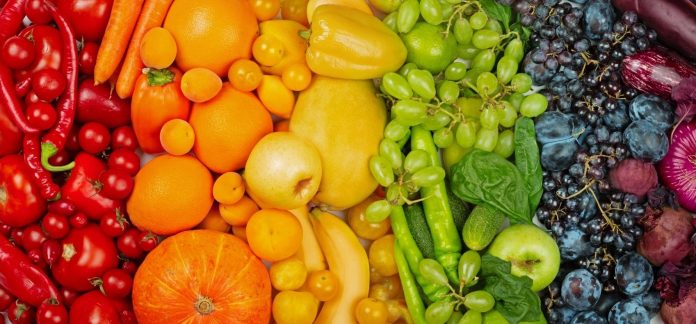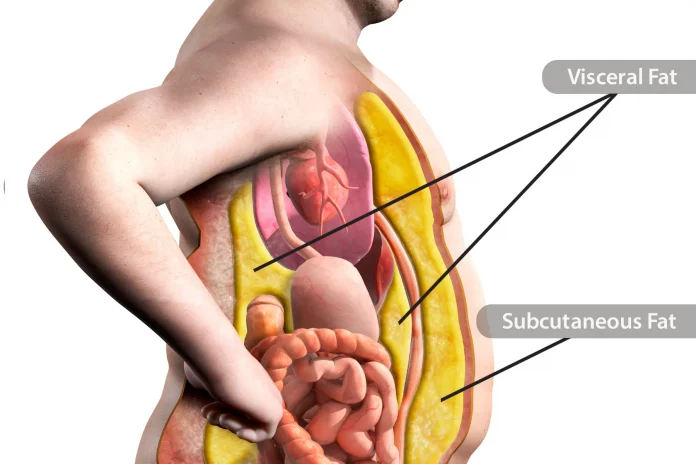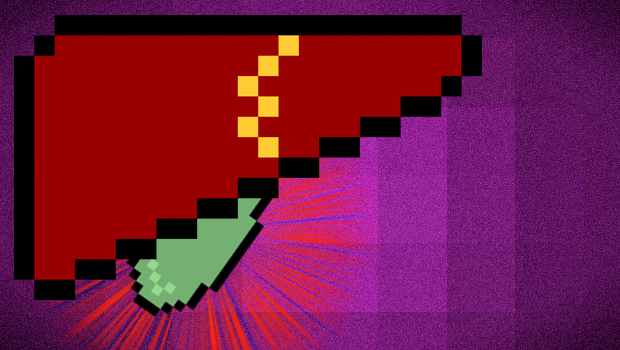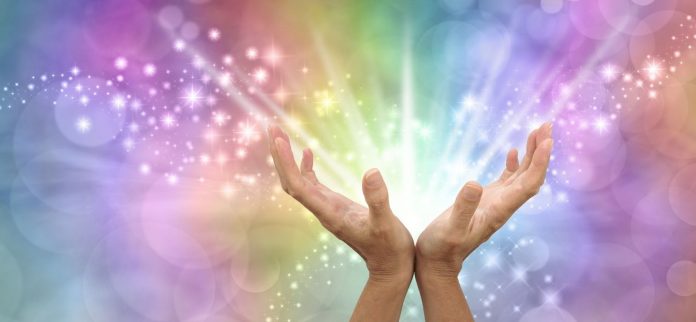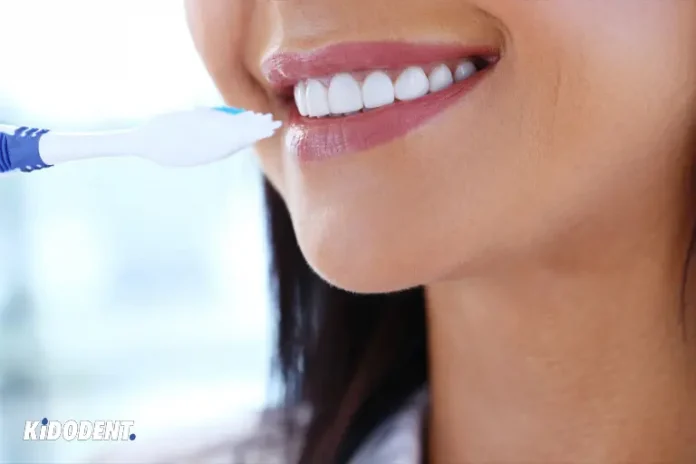Goyal, M. et al. Endovascular thrombectomy after large-vessel ischaemic stroke: a meta-analysis of individual patient data from five randomised trials. Lancet 387, 1723–1731 (2016).Article
PubMed
Google Scholar
Pinho, J., Costa, A. S., Araújo, J. M., Amorim, J. M. & Ferreira, C. Intracerebral hemorrhage outcome: a comprehensive update. J. Neurol. Sci. 398, 54–66 (2019).Article
PubMed
Google Scholar
The National Institute for Health and Care Excellence. Stroke Rehabilitation in Adults. NICE Guideline NG236 https://www.nice.org.uk/guidance/ng236 (2023).Dawson, J. et al. Vagus nerve stimulation paired with rehabilitation for upper limb motor function after ischaemic stroke (VNS-REHAB): a randomised, blinded, pivotal, device trial. Lancet 397, 1545–1553 (2021).Article
PubMed
PubMed Central
Google Scholar
Bornstein, N. M. et al. An injectable implant to stimulate the sphenopalatine ganglion for treatment of acute ischaemic stroke up to 24 h from onset (ImpACT-24B): an international, randomised, double-blind, sham-controlled, pivotal trial. Lancet 394, 219–229 (2019).Article
CAS
PubMed
Google Scholar
Levi, H. et al. Stimulation of the sphenopalatine ganglion induces reperfusion and blood-brain barrier protection in the photothrombotic stroke model. PLoS One 7, e39636 (2012).Article
CAS
PubMed
PubMed Central
Google Scholar
Seylaz, J. et al. Effect of stimulation of the sphenopalatine ganglion on cortical blood flow in the rat. J. Cereb. Blood Flow. Metab. 8, 875–878 (1988).Article
CAS
PubMed
Google Scholar
Jackson, A. & Zimmermann, J. B. Neural interfaces for the brain and spinal cord — restoring motor function. Nat. Rev. Neurol. 8, 690–699 (2012).Article
CAS
PubMed
Google Scholar
Denison, T. & Morrell, M. J. Neuromodulation in 2035: the neurology future forecasting series. Neurology 98, 65–72 (2022).Article
PubMed
PubMed Central
Google Scholar
Biasiucci, A. et al. Brain-actuated functional electrical stimulation elicits lasting arm motor recovery after stroke. Nat. Commun. 9, 2421 (2018).Article
CAS
PubMed
PubMed Central
Google Scholar
Wade, D. T., Langton-Hewer, R., Wood, V. A., Skilbeck, C. E. & Ismail, H. M. The hemiplegic arm after stroke: measurement and recovery. J. Neurol. Neurosurg. Psychiatry 46, 521–524 (1983).Article
CAS
PubMed
PubMed Central
Google Scholar
Baker, K. B. et al. Cerebellar deep brain stimulation for chronic post-stroke motor rehabilitation: a phase I trial. Nat. Med. 29, 2366–2374 (2023).Article
CAS
PubMed
PubMed Central
Google Scholar
Ward, N. S. Restoring brain function after stroke — bridging the gap between animals and humans. Nat. Rev. Neurol. 13, 244–255 (2017).Article
PubMed
Google Scholar
Townsley, R. B. & Hilmi, O. J. The use of nerve monitoring in the placement of vagal nerve stimulators. Clin. Otolaryngol. 42, 959–961 (2017).Article
CAS
PubMed
Google Scholar
U.S. Food and Drug Administration. FDA News Release: FDA Approves First-of-Its-Kind Stroke Rehabilitation System https://www.fda.gov/news-events/press-announcements/fda-approves-first-its-kind-stroke-rehabilitation-system (2021).Hulsey, D. R. et al. Parametric characterization of neural activity in the locus coeruleus in response to vagus nerve stimulation. Exp. Neurol. 289, 21–30 (2017).Article
PubMed
Google Scholar
Manta, S., Dong, J., Debonnel, G. & Blier, P. Enhancement of the function of rat serotonin and norepinephrine neurons by sustained vagus nerve stimulation. J. Psychiatry Neurosci. 34, 272–280 (2009).PubMed
PubMed Central
Google Scholar
Engineer, N. D. et al. Reversing pathological neural activity using targeted plasticity. Nature 470, 101–104 (2011).Article
PubMed
PubMed Central
Google Scholar
Khodaparast, N. et al. Vagus nerve stimulation during rehabilitative training improves forelimb strength following ischemic stroke. Neurobiol. Dis. 60, 80–88 (2013).Article
CAS
PubMed
Google Scholar
Khodaparast, N. et al. Vagus nerve stimulation during rehabilitative training improves forelimb recovery after chronic ischemic stroke in rats. Neurorehabil. Neural Repair 30, 676–684 (2016).Article
PubMed
Google Scholar
Hays, S. A. et al. Vagus nerve stimulation during rehabilitative training enhances recovery of forelimb function after ischemic stroke in aged rats. Neurobiol. Aging 43, 111–118 (2016).Article
PubMed
PubMed Central
Google Scholar
Hays, S. A. et al. Vagus nerve stimulation during rehabilitative training improves functional recovery after intracerebral hemorrhage. Stroke 45, 3097–3100 (2014).Article
PubMed
PubMed Central
Google Scholar
Meyers, E. C. et al. Vagus nerve stimulation enhances stable plasticity and generalization of stroke recovery. Stroke 49, 710–717 (2018).Article
PubMed
PubMed Central
Google Scholar
Bowles, S. et al. Vagus nerve stimulation drives selective circuit modulation through cholinergic reinforcement. Neuron https://doi.org/10.1016/j.neuron.2022.06.017 (2022).Article
PubMed
PubMed Central
Google Scholar
Dawson, J. et al. Safety, feasibility, and efficacy of vagus nerve stimulation paired with upper-limb rehabilitation after ischemic stroke. Stroke 47, 143–150 (2016).Article
PubMed
Google Scholar
Kimberley, T. J. et al. Vagus nerve stimulation paired with upper limb rehabilitation after chronic stroke. Stroke 49, 2789–2792 (2018).Article
PubMed
Google Scholar
Dawson, J. et al. Vagus nerve stimulation paired with upper-limb rehabilitation after stroke: one-year follow-up. Neurorehabil. Neural Repair 34, 609–615 (2020).Article
PubMed
Google Scholar
Francisco, G. E. et al. Vagus nerve stimulation paired with upper-limb rehabilitation after stroke: 2- and 3-year follow-up from the pilot study. Arch. Phys. Med. Rehabil. 104, 1180–1187 (2023).Article
PubMed
Google Scholar
Dawson, J. et al. Vagus nerve stimulation paired with rehabilitation for upper limb motor impairment and function after chronic ischemic stroke: subgroup analysis of the randomized, blinded, pivotal, VNS-REHAB device trial. Neurorehabil. Neural Repair 37, 367–373 (2023).Article
PubMed
Google Scholar
Kimberley, T. J. et al. Abstract 150: Vagus nerve stimulation (VNS) paired with upper extremity rehabilitation in chronic stroke: improvements in wrist and hand impairment and function. Stroke 54, A150 (2023).Article
Google Scholar
Kilgard, M. P., Rennaker, R. L., Alexander, J. & Dawson, J. Vagus nerve stimulation paired with tactile training improved sensory function in a chronic stroke patient. NeuroRehabilitation 42, 159–165 (2018).Article
PubMed
Google Scholar
Kimberley, T. J. et al. Vagus nerve stimulation paired with mobility training in chronic ischemic stroke: a case report. Phys. Ther. 103, pzad097 (2023).Article
PubMed
PubMed Central
Google Scholar
US National Library of Medicine. ClinicalTrials.gov https://clinicaltrials.gov/ct2/show/NCT04534556 (2020).Martino, R. et al. Dysphagia after stroke: incidence, diagnosis, and pulmonary complications. Stroke 36, 2756–2763 (2005).Article
PubMed
Google Scholar
Hamdy, S., Rothwell, J. C., Aziz, Q., Singh, K. D. & Thompson, D. G. Long-term reorganization of human motor cortex driven by short-term sensory stimulation. Nat. Neurosci. 1, 64–68 (1998).Article
CAS
PubMed
Google Scholar
Hamdy, S. et al. Recovery of swallowing after dysphagic stroke relates to functional reorganization in the intact motor cortex. Gastroenterology 115, 1104–1112 (1998).Article
CAS
PubMed
Google Scholar
Fraser, C. et al. Driving plasticity in human adult motor cortex is associated with improved motor function after brain injury. Neuron 34, 831–840 (2002).Article
CAS
PubMed
Google Scholar
Fraser, C. et al. Differential changes in human pharyngoesophageal motor excitability induced by swallowing, pharyngeal stimulation, and anesthesia. Am. J. Physiol. Gastrointest. Liver Physiol. 285, G137–144 (2003).Article
CAS
PubMed
Google Scholar
Teismann, I. K. et al. Functional oropharyngeal sensory disruption interferes with the cortical control of swallowing. BMC Neurosci. 8, 62 (2007).Article
PubMed
PubMed Central
Google Scholar
The National Institute for Health and Care Excellence (NICE). Pharyngeal Electrical Stimulation for Neurogenic Dysphagia. Interventional Procedures Guidance [IPG781]. https://www.nice.org.uk/guidance/ipg781 (2024).Jayasekeran, V. et al. Adjunctive functional pharyngeal electrical stimulation reverses swallowing disability after brain lesions. Gastroenterology 138, 1737–1746.e32 (2010).Article
PubMed
Google Scholar
Vasant, D. H. et al. Pharyngeal electrical stimulation in dysphagia poststroke: a prospective, randomized single-blinded interventional study. Neurorehabil. Neural Repair 30, 866–875 (2016).Article
PubMed
Google Scholar
Scutt, P., Lee, H. S., Hamdy, S. & Bath, P. M. Pharyngeal electrical stimulation for treatment of poststroke dysphagia: individual patient data meta-analysis of randomised controlled trials. Stroke Res. Treat. 2015, 429053 (2015).PubMed
PubMed Central
Google Scholar
Bath, P. M. et al. Pharyngeal electrical stimulation for treatment of dysphagia in subacute stroke. Stroke 47, 1562–1570 (2016).Article
PubMed
PubMed Central
Google Scholar
Suntrup, S. et al. Electrical pharyngeal stimulation for dysphagia treatment in tracheotomized stroke patients: a randomized controlled trial. Intensive Care Med. 41, 1629–1637 (2015).Article
CAS
PubMed
Google Scholar
Dziewas, R. et al. Pharyngeal electrical stimulation for early decannulation in tracheotomised patients with neurogenic dysphagia after stroke (PHAST-TRAC): a prospective, single-blinded, randomised trial. Lancet Neurol. 17, 849–859 (2018).Article
PubMed
Google Scholar
Dennis, M. Pharyngeal stimulation after stroke: more evidence is needed. Lancet Neurol. 17, 830–831 (2018).Article
PubMed
Google Scholar
Bath, P. Electrical stimulation of the throat for swallowing difficulties after stroke. ISRCTN https://doi.org/10.1186/ISRCTN98886991 (2022).Article
Google Scholar
Baig, S. S. et al. Transcutaneous auricular vagus nerve stimulation with upper limb repetitive task practice may improve sensory recovery in chronic stroke. J. Stroke Cerebrovasc. Dis. 28, 104348 (2019).Article
PubMed
Google Scholar
Badran, B. W. et al. Neurophysiologic effects of transcutaneous auricular vagus nerve stimulation (taVNS) via electrical stimulation of the tragus: a concurrent taVNS/fMRI study and review. Brain Stimul. 11, 492–500 (2018).Article
PubMed
Google Scholar
de Melo, P. S. et al. Understanding the neuroplastic effects of auricular vagus nerve stimulation in animal models of stroke: a systematic review and meta-analysis. Neurorehabil. Neural Repair 37, 564–576 (2023).Article
PubMed
Google Scholar
Redgrave, J. N. et al. Transcutaneous auricular vagus nerve stimulation with concurrent upper limb repetitive task practice for poststroke motor recovery: a pilot study. J. Stroke Cerebrovasc. Dis. 27, 1998–2005 (2018).Article
PubMed
Google Scholar
Wu, D. et al. Effect and safety of transcutaneous auricular vagus nerve stimulation on recovery of upper limb motor function in subacute ischemic stroke patients: a randomized pilot study. Neural Plast. 2020, 8841752 (2020).Article
PubMed
PubMed Central
Google Scholar
Capone, F. et al. Transcutaneous vagus nerve stimulation combined with robotic rehabilitation improves upper limb function after stroke. Neural Plast. 2017, 7876507 (2017).Article
PubMed
PubMed Central
Google Scholar
Li, J. N. et al. Efficacy and safety of transcutaneous auricular vagus nerve stimulation combined with conventional rehabilitation training in acute stroke patients: a randomized controlled trial conducted for 1 year involving 60 patients. Neural Regen. Res. 17, 1809–1813 (2022).Article
PubMed
PubMed Central
Google Scholar
Chang, J. L. et al. Transcutaneous auricular vagus nerve stimulation (tAVNS) delivered during upper limb interactive robotic training demonstrates novel antagonist control for reaching movements following stroke. Front. Neurosci. 15, 767302 (2021).Article
PubMed
PubMed Central
Google Scholar
Subrahmanyamc, S. Effectiveness of transcutaneous electrical stimulation of vagus nerve among post stroke urinary incontinence. Eur. J. Mol. Clin. Med. 7, 3895–3913 (2020).
Google Scholar
Wang, Y. et al. Effect of transcutaneous auricular vagus nerve stimulation on post-stroke dysphagia. J. Neurol. 270, 995–1003 (2023).Article
PubMed
Google Scholar
Arsava, E. M. et al. Assessment of safety and feasibility of non-invasive vagus nerve stimulation for treatment of acute stroke. Brain Stimul. 15, 1467–1474 (2022).Article
PubMed
Google Scholar
Fitzgerald, P. B., Fountain, S. & Daskalakis, Z. J. A comprehensive review of the effects of rTMS on motor cortical excitability and inhibition. Clin. Neurophysiol. 117, 2584–2596 (2006).Article
PubMed
Google Scholar
Maeda, F., Keenan, J. P., Tormos, J. M., Topka, H. & Pascual-Leone, A. Interindividual variability of the modulatory effects of repetitive transcranial magnetic stimulation on cortical excitability. Exp. Brain Res. 133, 425–430 (2000).Article
CAS
PubMed
Google Scholar
Krogh, S., Jønsson, A. B., Aagaard, P. & Kasch, H. Efficacy of repetitive transcranial magnetic stimulation for improving lower limb function in individuals with neurological disorders: a systematic review and meta-analysis of randomized sham-controlled trials. J. Rehabil. Med. 54, jrm00256 (2022).Article
PubMed
Google Scholar
Li, L. et al. Systematic review and network meta-analysis of noninvasive brain stimulation on dysphagia after stroke. Neural Plast. 2021, 3831472 (2021).Article
PubMed
PubMed Central
Google Scholar
Arheix-Parras, S. et al. A systematic review of repetitive transcranial magnetic stimulation in aphasia rehabilitation: leads for future studies. Neurosci. Biobehav. Rev. 127, 212–241 (2021).Article
PubMed
Google Scholar
Liampas, A. et al. Prevalence and management challenges in central post-stroke neuropathic pain: a systematic review and meta-analysis. Adv. Ther. 37, 3278–3291 (2020).Article
PubMed
PubMed Central
Google Scholar
Liu, M., Bao, G., Bai, L. & Yu, E. The role of repetitive transcranial magnetic stimulation in the treatment of cognitive impairment in stroke patients: a systematic review and meta-analysis. Sci. Prog. 104, 368504211004266 (2021).Article
PubMed
Google Scholar
Klomjai, W., Katz, R. & Lackmy-Vallée, A. Basic principles of transcranial magnetic stimulation (TMS) and repetitive TMS (rTMS). Ann. Phys. Rehabil. Med. 58, 208–213 (2015).Article
PubMed
Google Scholar
Ikeda, T., Kobayashi, S. & Morimoto, C. Gene expression microarray data from mouse CBS treated with rTMS for 30 days, mouse cerebrum and CBS treated with rTMS for 40 days. Data Brief. 17, 1078–1081 (2018).Article
PubMed
PubMed Central
Google Scholar
Chen, Q. M. et al. Combining inhibitory and facilitatory repetitive transcranial magnetic stimulation (rTMS) treatment improves motor function by modulating GABA in acute ischemic stroke patients. Restor. Neurol. Neurosci. 39, 419–434 (2021).CAS
PubMed
Google Scholar
Cha, B. et al. Therapeutic effect of repetitive transcranial magnetic stimulation for post-stroke vascular cognitive impairment: a prospective pilot study. Front. Neurol. 13, 813597 (2022).Article
PubMed
PubMed Central
Google Scholar
Hong, Y. et al. High-frequency repetitive transcranial magnetic stimulation improves functional recovery by inhibiting neurotoxic polarization of astrocytes in ischemic rats. J. Neuroinflammation 17, 150 (2020).Article
CAS
PubMed
PubMed Central
Google Scholar
Hoogendam, J. M., Ramakers, G. M. & Di Lazzaro, V. Physiology of repetitive transcranial magnetic stimulation of the human brain. Brain Stimul. 3, 95–118 (2010).Article
PubMed
Google Scholar
Hsu, W. Y., Cheng, C. H., Liao, K. K., Lee, I. H. & Lin, Y. Y. Effects of repetitive transcranial magnetic stimulation on motor functions in patients with stroke: a meta-analysis. Stroke 43, 1849–1857 (2012).Article
PubMed
Google Scholar
Zhang, L. et al. Short- and long-term effects of repetitive transcranial magnetic stimulation on upper limb motor function after stroke: a systematic review and meta-analysis. Clin. Rehabil. 31, 1137–1153 (2017).Article
PubMed
Google Scholar
Harvey, R. L. et al. Randomized sham-controlled trial of navigated repetitive transcranial magnetic stimulation for motor recovery in stroke. Stroke 49, 2138–2146 (2018).Article
PubMed
Google Scholar
Kim, W. S., Kwon, B. S., Seo, H. G., Park, J. & Paik, N. J. Low-frequency repetitive transcranial magnetic stimulation over contralesional motor cortex for motor recovery in subacute ischemic stroke: a randomized sham-controlled trial. Neurorehabil. Neural Repair 34, 856–867 (2020).Article
PubMed
Google Scholar
Ille, S. et al. Navigated repetitive transcranial magnetic stimulation improves the outcome of postsurgical paresis in glioma patients — a randomized, double-blinded trial. Brain Stimul. 14, 780–787 (2021).Article
PubMed
Google Scholar
Chiu, D. et al. Multifocal transcranial stimulation in chronic ischemic stroke: a phase 1/2a randomized trial. J. Stroke Cerebrovasc. Dis. 29, 104816 (2020).Article
PubMed
Google Scholar
Wischnewski, M. & Schutter, D. J. Efficacy and time course of theta burst stimulation in healthy humans. Brain Stimul. 8, 685–692 (2015).Article
PubMed
Google Scholar
Vink, J. J. T. et al. Continuous theta-burst stimulation of the contralesional primary motor cortex for promotion of upper limb recovery after stroke: a randomized controlled trial. Stroke 54, 1962–1971 (2023).Article
PubMed
PubMed Central
Google Scholar
Edwards, J. D. et al. Canadian platform for trials in noninvasive brain stimulation (CanStim) consensus recommendations for repetitive transcranial magnetic stimulation in upper extremity motor stroke rehabilitation trials. Neurorehabil. Neural Repair 35, 103–116 (2021).Article
PubMed
Google Scholar
Rossi, S. et al. Safety and recommendations for TMS use in healthy subjects and patient populations, with updates on training, ethical and regulatory issues: expert guidelines. Clin. Neurophysiol. 132, 269–306 (2021).Article
PubMed
Google Scholar
Rossi, S., Hallett, M., Rossini, P. M. & Pascual-Leone, A. Safety, ethical considerations, and application guidelines for the use of transcranial magnetic stimulation in clinical practice and research. Clin. Neurophysiol. 120, 2008–2039 (2009).Article
PubMed
PubMed Central
Google Scholar
Singh, H. & Neil, L. A. Incidence of side effects in patients receiving repetitive transcranial magnetic stimulation (rTMS). Brain Stimul. 13, 1847–1848 (2020).Article
Google Scholar
Bikson, M. et al. Safety of transcranial direct current stimulation: evidence based update 2016. Brain Stimul. 9, 641–661 (2016).Article
PubMed
PubMed Central
Google Scholar
Schlaug, G., Renga, V. & Nair, D. Transcranial direct current stimulation in stroke recovery. Arch. Neurol. 65, 1571–1576 (2008).Article
PubMed
PubMed Central
Google Scholar
Yamada, Y. & Sumiyoshi, T. Neurobiological mechanisms of transcranial direct current stimulation for psychiatric disorders; neurophysiological, chemical, and anatomical considerations. Front. Hum. Neurosci. 15, 631838 (2021).Article
CAS
PubMed
PubMed Central
Google Scholar
Longo, V. et al. Transcranial direct current stimulation enhances neuroplasticity and accelerates motor recovery in a stroke mouse model. Stroke 53, 1746–1758 (2022).Article
CAS
PubMed
Google Scholar
Elsner, B., Kwakkel, G., Kugler, J. & Mehrholz, J. Transcranial direct current stimulation (tDCS) for improving capacity in activities and arm function after stroke: a network meta-analysis of randomised controlled trials. J. Neuroeng. Rehabil. 14, 95 (2017).Article
PubMed
PubMed Central
Google Scholar
Van Hoornweder, S. et al. The effects of transcranial direct current stimulation on upper-limb function post-stroke: a meta-analysis of multiple-session studies. Clin. Neurophysiol. 132, 1897–1918 (2021).Article
PubMed
Google Scholar
Edwards, D. J. et al. Clinical improvement with intensive robot-assisted arm training in chronic stroke is unchanged by supplementary tDCS. Restor. Neurol. Neurosci. 37, 167–180 (2019).PubMed
Google Scholar
Chhatbar, P. Y. et al. Transcranial direct current stimulation post-stroke upper extremity motor recovery studies exhibit a dose-response relationship. Brain Stimul. 9, 16–26 (2016).Article
PubMed
Google Scholar
Cordes, D. et al. Efficacy and safety of transcranial direct current stimulation to the ipsilesional motor cortex in subacute stroke (NETS): a multicenter, randomized, double-blind, placebo-controlled trial. Lancet Reg. Health Europe 38, 100825 (2024).Article
Google Scholar
Elsner, B., Kugler, J., Pohl, M. & Mehrholz, J. Transcranial direct current stimulation (tDCS) for improving aphasia in adults with aphasia after stroke. Cochrane Database Syst. Rev. 5, CD009760 (2019).PubMed
Google Scholar
Cherney, L. R., Erickson, R. K. & Small, S. L. Epidural cortical stimulation as adjunctive treatment for non-fluent aphasia: preliminary findings. J. Neurol. Neurosurg. Psychiatry 81, 1014–1021 (2010).Article
PubMed
Google Scholar
Adkins-Muir, D. L. & Jones, T. A. Cortical electrical stimulation combined with rehabilitative training: enhanced functional recovery and dendritic plasticity following focal cortical ischemia in rats. Neurol. Res. 25, 780–788 (2003).Article
PubMed
Google Scholar
Plautz, E. J. et al. Post-infarct cortical plasticity and behavioral recovery using concurrent cortical stimulation and rehabilitative training: a feasibility study in primates. Neurol. Res. 25, 801–810 (2003).Article
PubMed
Google Scholar
Brown, J. A., Lutsep, H. L., Weinand, M. & Cramer, S. C. Motor cortex stimulation for the enhancement of recovery from stroke: a prospective, multicenter safety study. Neurosurgery 58, 464–473 (2006).Article
PubMed
Google Scholar
Levy, R. et al. Cortical stimulation for the rehabilitation of patients with hemiparetic stroke: a multicenter feasibility study of safety and efficacy. J. Neurosurg. 108, 707–714 (2008).Article
PubMed
Google Scholar
Levy, R. M. et al. Epidural electrical stimulation for stroke rehabilitation: results of the prospective, multicenter, randomized, single-blinded Everest trial. Neurorehabil. Neural Repair 30, 107–119 (2016).Article
PubMed
Google Scholar
Powell, M. P. et al. Epidural stimulation of the cervical spinal cord for post-stroke upper-limb paresis. Nat. Med. 29, 689–699 (2023).Article
CAS
PubMed
PubMed Central
Google Scholar
Angeli, C. A., Edgerton, V. R., Gerasimenko, Y. P. & Harkema, S. J. Altering spinal cord excitability enables voluntary movements after chronic complete paralysis in humans. Brain 137, 1394–1409 (2014).Article
PubMed
PubMed Central
Google Scholar
Kumar, P., Kathuria, P., Nair, P. & Prasad, K. Prediction of upper limb motor recovery after subacute ischemic stroke using diffusion tensor imaging: a systematic review and meta-analysis. J. Stroke 18, 50–59 (2016).Article
PubMed
PubMed Central
Google Scholar
Stinear, C. M. et al. PREP2: a biomarker-based algorithm for predicting upper limb function after stroke. Ann. Clin. Transl. Neurol. 4, 811–820 (2017).Article
PubMed
PubMed Central
Google Scholar
Macklin, R. The ethical problems with sham surgery in clinical research. N. Engl. J. Med. 341, 992–996 (1999).Article
CAS
PubMed
Google Scholar
Sterne, J. A., Egger, M. & Smith, G. D. Systematic reviews in health care: investigating and dealing with publication and other biases in meta-analysis. BMJ 323, 101–105 (2001).Article
CAS
PubMed
PubMed Central
Google Scholar
